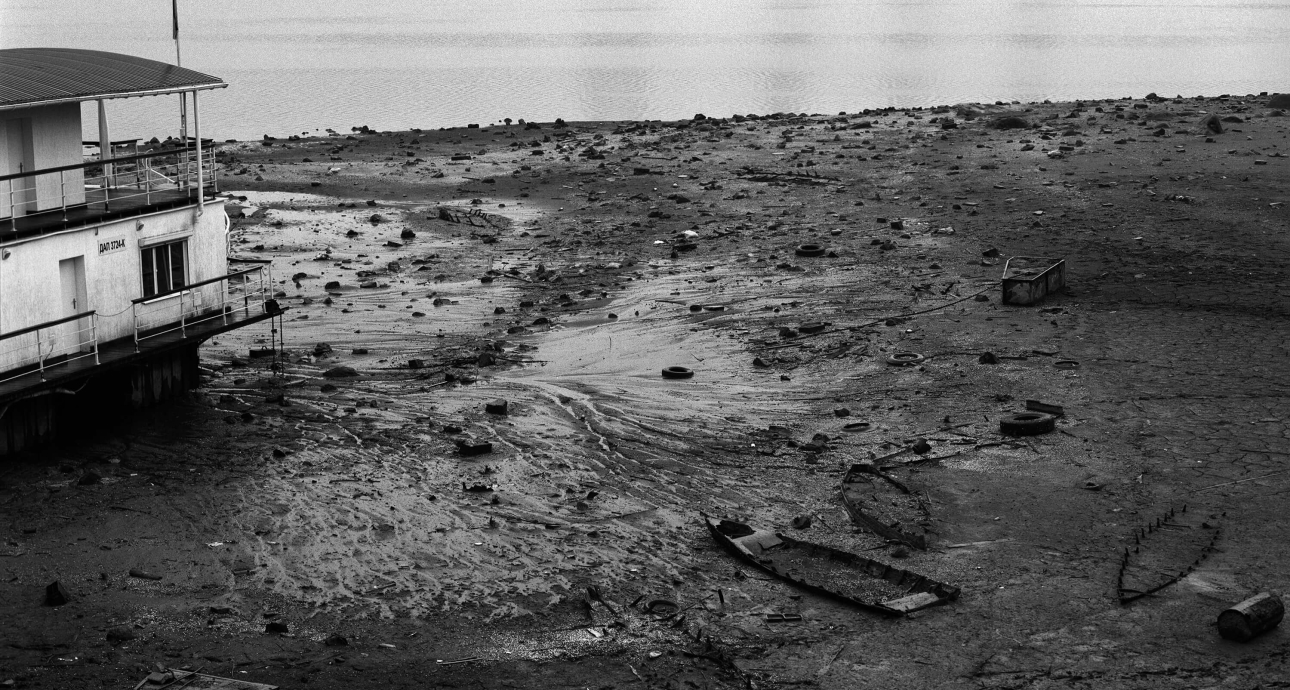
Spare Land: How the Explosion of the Kakhovka Dam Altered the Landscape

A Ph.D. in Sociology, graduated from the Viktor Marushchenko School of Photography and attended courses by the American organization Image Thread Collective, as well as seminars by Sasha Rudensky (Wesleyan University). In 2019, she received the Bird in Flight Prize in the "Discovery of the Year" category, and in 2022, she was awarded the Hariban Award by the Japanese studio Benrido. She has participated in exhibitions in Ukraine, Europe, and the USA.
— The machine hall of the Kakhovka Hydroelectric Power Station was blown up on the night of June 6, 2023. We still know nothing about the fate of all those who perished from the explosion and the flood it caused. Russian troops mined the coastline. In videos taken from the flood-affected areas, mines lifted by the water from the ground could be seen. They swirled chaotically in the water vortexes and detonated just as chaotically. Later, rescuers told me how they found Russian soldiers hiding from the flood in trees during their outings. No one felt sorry for them, weakened and unarmed.
I began working on the Desperations series dedicated to the ecological catastrophe in southern Ukraine in the summer of 2023. The left bank of the region was under Russian occupation. The work started in Kherson. Kherson was closed to journalists due to the flood and constant shelling by the Russians. I stayed near the city, in one of the flooded villages, to which water continued to arrive even days after the explosion at the hydroelectric power station. I took several photos: they depicted the evacuation of locals, whom the police and volunteers transported on boats, and dead animals. I even managed to get to Kherson, but I couldn’t take any photos there – the entire coastal line was surrounded by military and police.



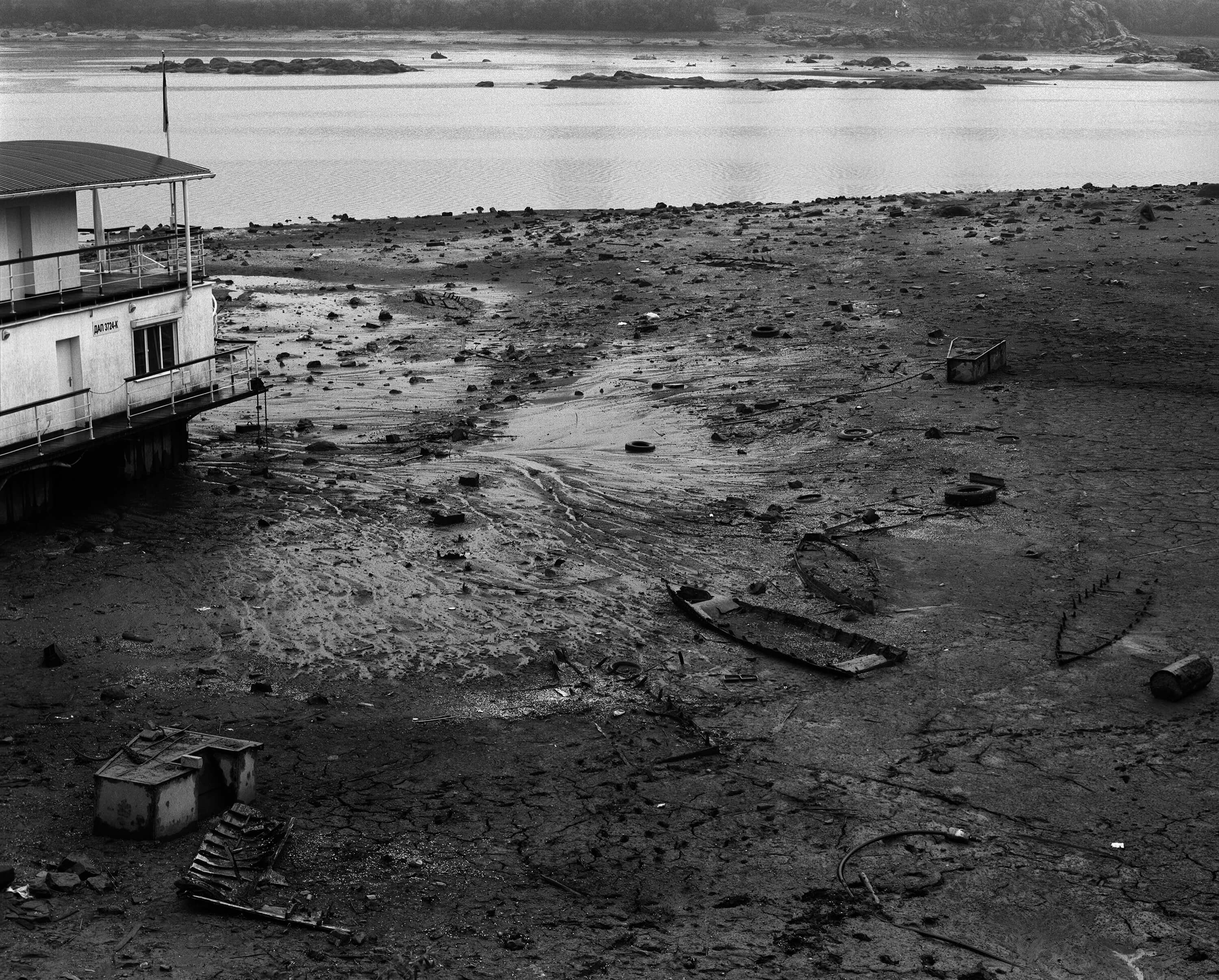


On the third day, the only road that connected our village to the outside world was flooded after a prolonged rain. I found myself in an isolated space. The village was located not far from Ukrainian positions, so from time to time, lying in bed, I could hear the sounds of artillery fire. By the end of the day, saturated with war and views of blooming poppies, the anxiety would subside. The sense of threat and the feeling of safety would blend together. I felt something in between sleep and a trance.
In my work, I focused on the depiction of space. Its main thematic contrast lay between the psychological tension of people experiencing the war and scenes of everyday life.
After Kherson, I headed to Zaporizhzhia and Nikopol to explore how the explosion of the Kakhovka Hydroelectric Power Station affected nature and the local residents. Zaporizhzhia is an industrial city with striking structures of the Dnipro Hydroelectric Complex, arches of bridges, and the rocky island of Khortytsia in the Dnipro River.



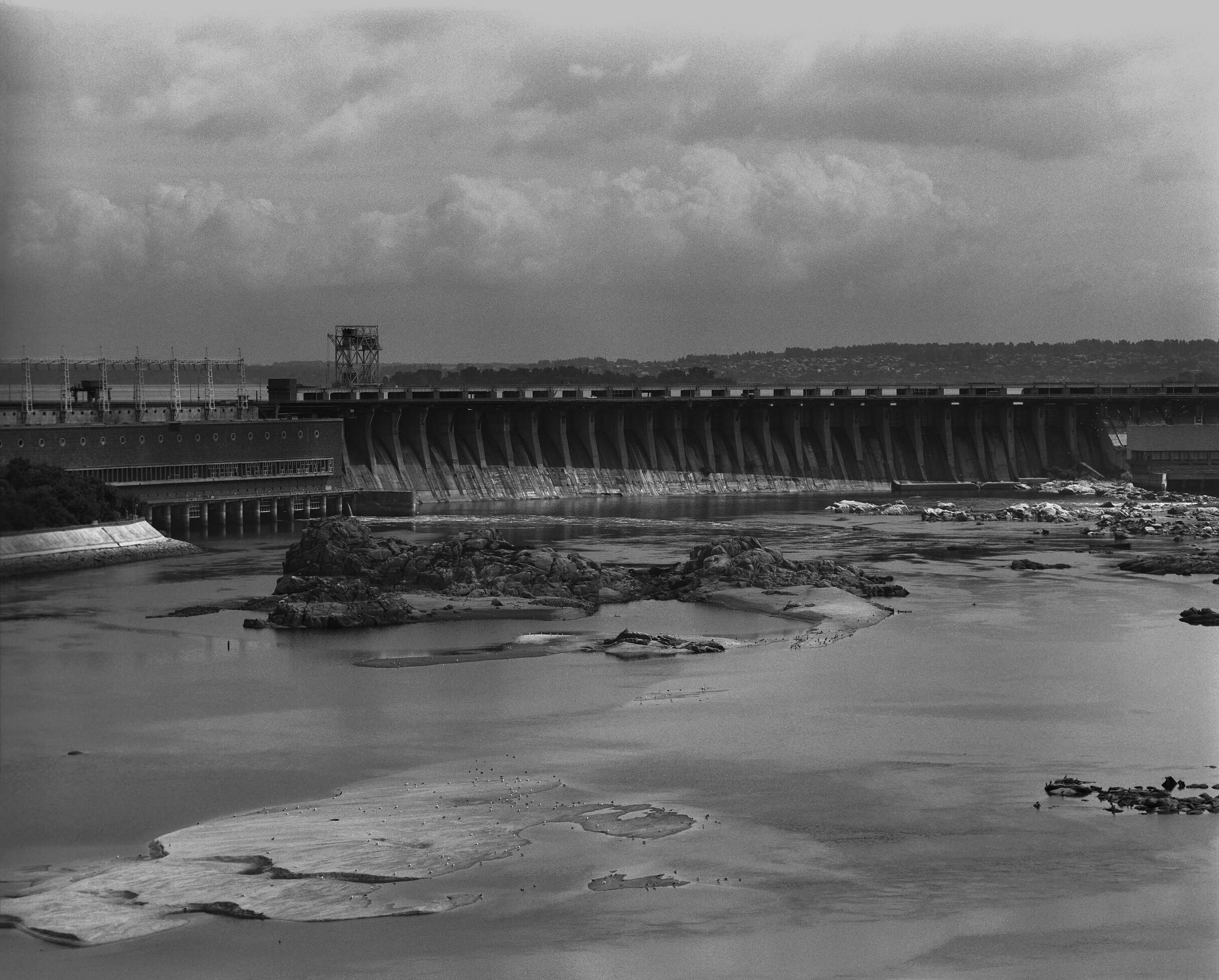


The landscapes of Zaporizhzhia represent a geological chronicle of technological and natural catastrophes. When you look at them, you can travel deep into history, observing how symbols of Soviet industrialization overlay the consequences of the great catastrophe – the destruction of the Kakhovka Dam. In the northern part of Khortytsia, the Ukrainian crystalline shield, which was once part of the supercontinent, emerges on the surface. These rocks are so ancient that they bear no traces of even the most primitive life, as during the formation of these rocks, the Earth did not yet have an atmosphere.
After developing the films taken during the first trip, I realized that I was missing everyday scenes. This discovery was unexpected for me because initially, in the project, I wanted to focus on deserted landscapes.
Soon, on the website of the Khortytsia Island Reserve, I saw photographs of people walking on the dried bottom of the Dnipro River. Museum staff asked tourists not to visit these places because birds nest there. In addition, such walks are dangerous. But people did not listen.
These pictures impressed me. Mass walks to rocky heights and sandy shallows stretching along the dam structures testified to the cult significance of the land. They had something religious about them. That’s when I understood that I needed to return to the island to document what was happening there.
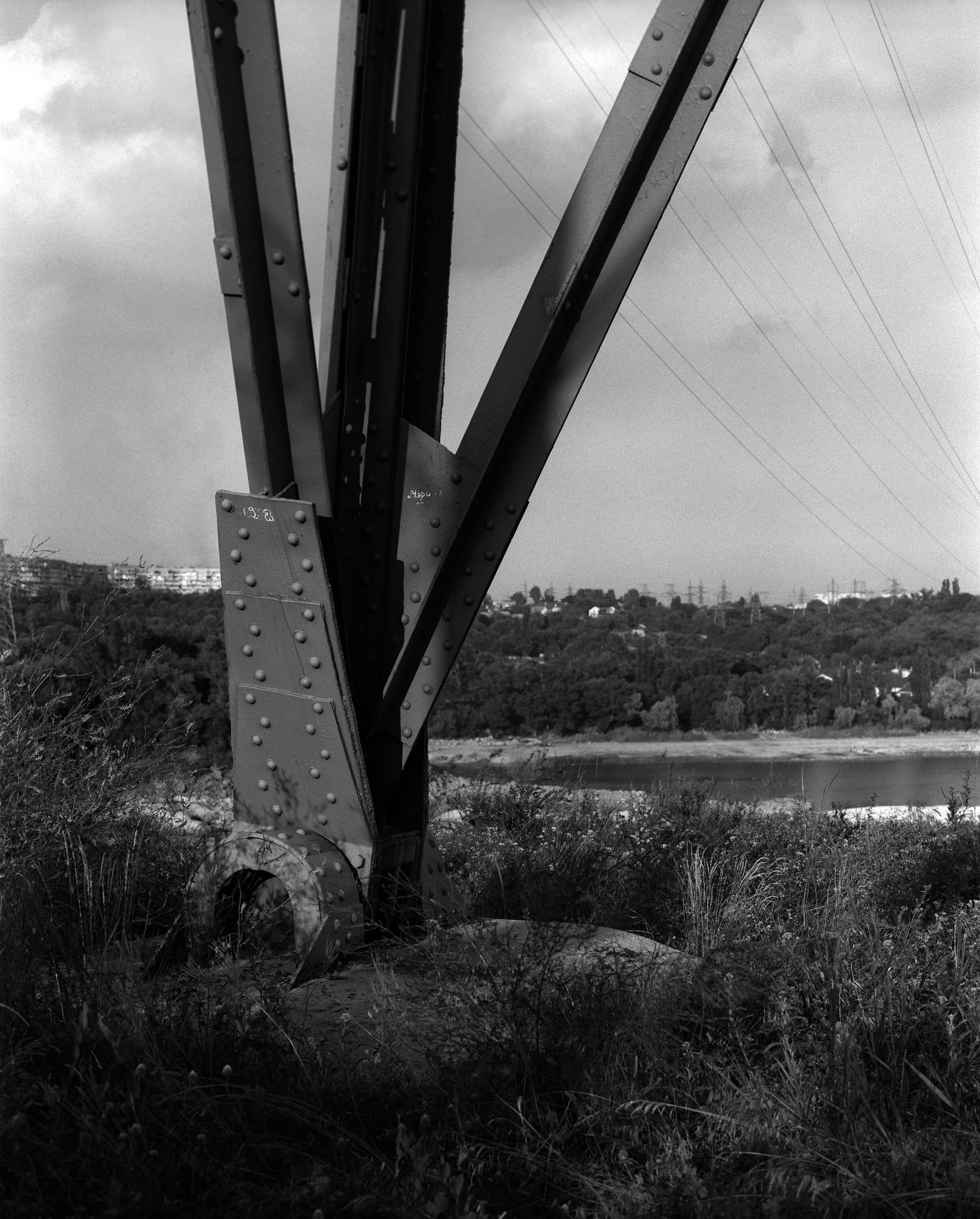

I returned to Zaporizhzhia, but this time I focused my work on everyday life – beach leisure on the exposed shoreline. I also managed to explore the shoreline of Khortytsia Island. The Ukrainian counteroffensive continued. Authorities feared Russian sabotage at the Zaporizhzhia Nuclear Power Plant. Against this backdrop, a scene of carefree life unfolded in the city. So, the main theme of my work became this tension that arose between peaceful existence and existential fear of the possibility of another catastrophe.
I was only able to work on the project “Pilgrimage” for two days. I went down to the shores of Khortytsia and set up the camera. I shot with a static long shot, taking several photographs. Then the air raid alarm started.



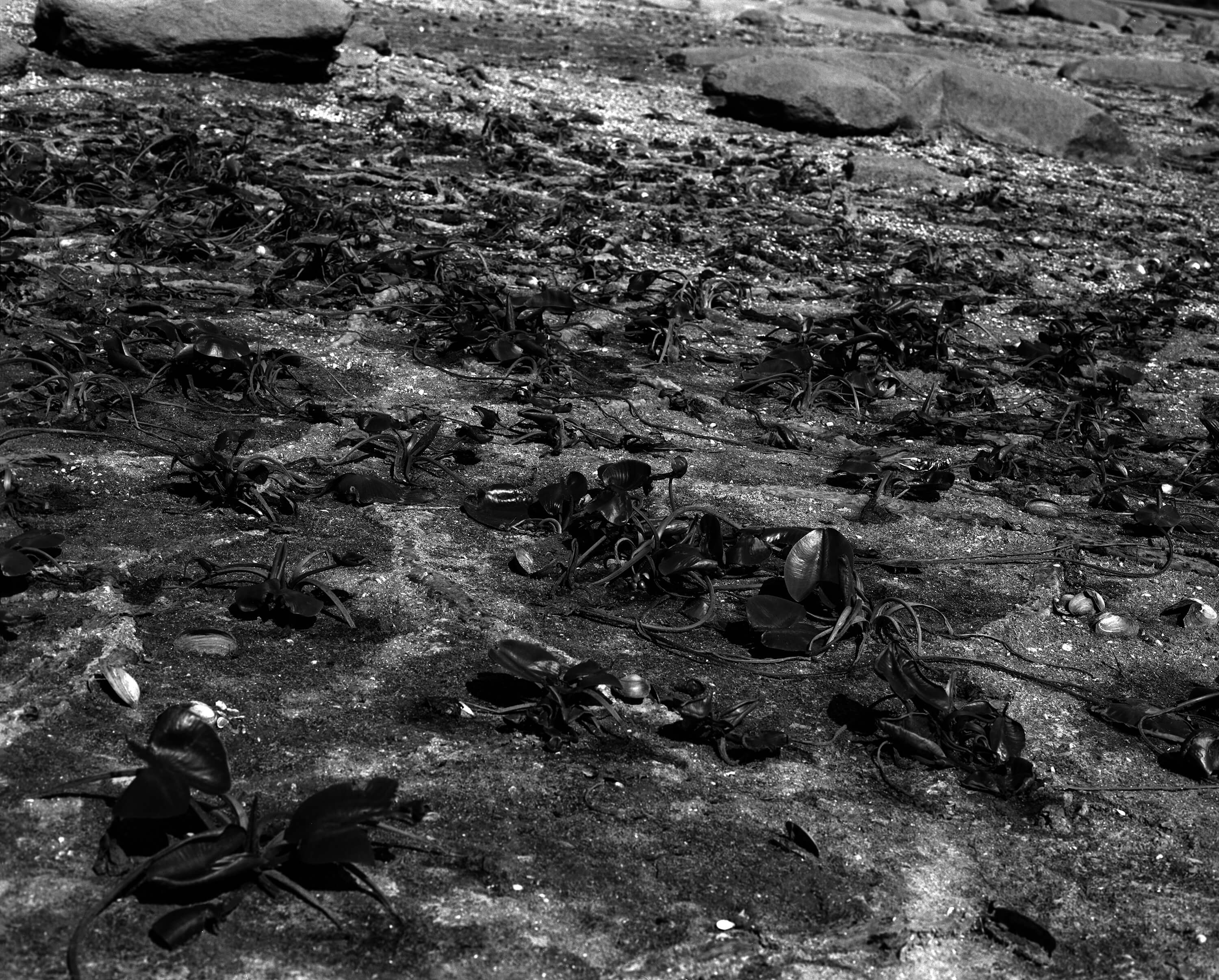


The next morning, I headed to the cliffs. The delicate sandbanks were covered with a thick layer of shell limestone. It felt like I had encountered the past. There was a strong wind, and I wandered alone.
By noon, I finally reached the cliffs and saw the dried trees there, with huge nests of black cormorants swaying on their branches. I could approach the birds sitting in them up close. That’s when I understood the warning from the museum staff. This reality truly knew no human presence.
Then I noticed the police officers, ferrying across from the opposite shore in a boat. They were heading towards me. The officers told me that I was too close to the powerhouses, and I couldn’t take photos there. I realized that it would be unlikely for me to visit this place again. This realization made the captured material very personal. It turned into a performance that could not be repeated.



This material was created with the support of Media Lifeline Ukraine.
New and best




